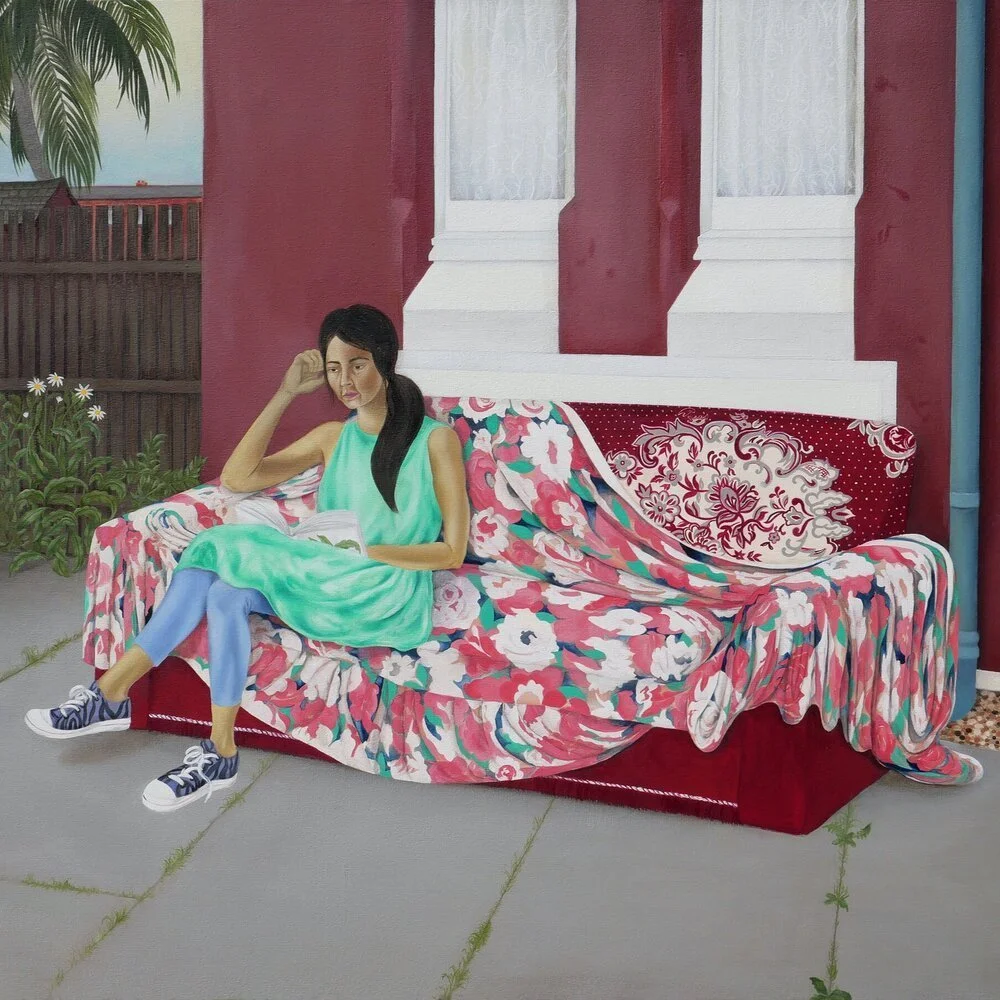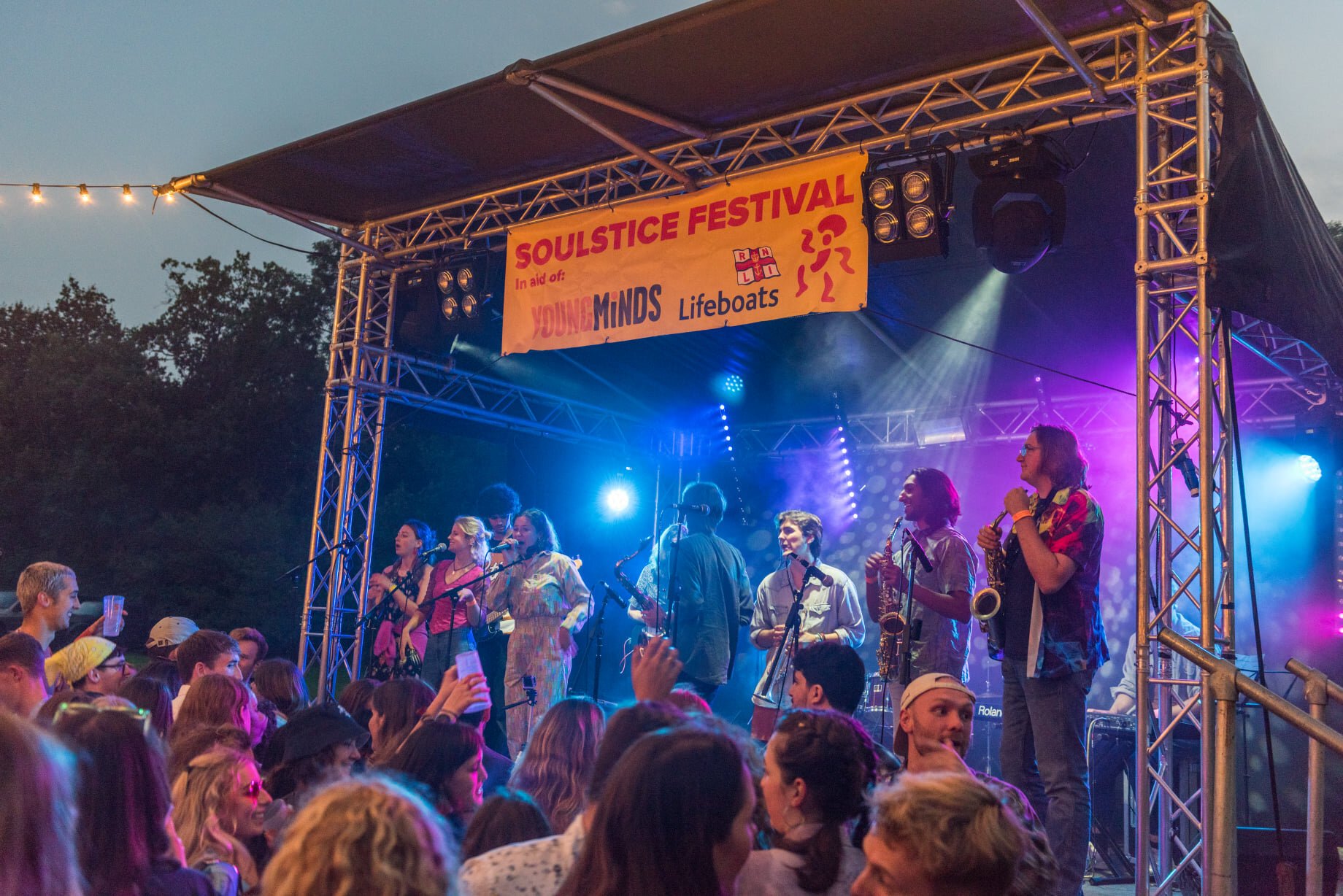17 - Changing the definition of 'British Art': Sitting down with Raksha Patel - Julia Price
Close your eyes and think of British Art. What do you see? Water-colours? Portraits of our kings and queens? Turner? Damien Hirst? What do these all have in common? It is very white and it is very male.
Without wanting to degrade years of impressive work, why is it that the public’s general understanding of “British Art” has become fashioned around white male artists? The same reasons when we think of British history that we might primarily think of kings, queens and the Tudors. It is what has been embedded into our education and curriculums for many years.
This intrinsic look at Britain is not always sensitive to the colonialist history it created. It doesn’t take into account the colonies that slowly permeated and have become a true part of Britain’s identity. Over recent years and heightened during the first lockdown due to the intensification of the Black Lives Matter movement, further research into non-white British artists is slowly (and finally) giving them the limelight they deserve.
Britain’s imperialist background means that being British is a multicultural sensation – so our history and history of art lessons should reflect that. As a white woman, I can of course never fully understand what the lack of representation in history books, museums and galleries feels like, however I was lucky enough to sit down with artist, lecturer in painting (Camberwell College of Arts) and art-researcher Raksha Patel to try and gain an insight into how this feels and why she felt the need to start the “British South Asian Visual Art Post Cool Britannia” research group.
“When I walk down the road, I just walk down the road, I do not think of my race or my gender – it is people’s imposition that creates the experiences of you, not how you feel about yourself.”
Raksha’s experience as a woman of colour in the art world highlights the systemic elitism and unconscious bias that still exists in areas of the industry. She also highlighted that since Brexit, this has only become worse: her fellow artists of colour have been the subject of racist behaviour in their workplace; she has been frequently been confused for a security guard whilst doing lectures at national galleries and British South Asian art is still “almost invisible.”
Raksha’s fantastic initiative is giving more visibility to British South Asian art. alongside her colleague Daniel Sturgis, Raksha set up this research group focussing on the work of British South Asian artists. The impetus to establish this group was the result of anti-racist and decolonizing discussions within the Camberwell College of Arts’ walls and “due to the frustration of being one of two art lecturers in painting of colour”.
The Yard, Oil on canvas, 2021. Raksha Patel ©
From Raksha’s vocality and further funding a formalised research group was born. The group focuses on not just British South Asian art, but specifically post 90s/00s. Most research into British South Asian Artists was during the Black British Art movement of the 1980s, however it then slowed steadily until it became a hugely under-researched topic.
“It is a tragedy that this art is disappearing in front of our eyes.” The Research Group is doing brilliant work by cherishing works from this region and time period.
The Outsider, Oil on Canvas, 2018. Raksha Patel ©
I have personally been thankful to the research group for introducing me to the work of Aamta Tul Waheed. Waheed is a British Muslim female artist whos practice explores the societal issues that she faces as a British South Asian artist. Her medium is mostly paint on photographs to explore these gendered stereotypes and cultured tensions of Muslim women living in the UK.
Through celebrating this art and artists, it gives them a spotlight, with a hope that it can be represented more in museums and galleries. Currently, when considering “British art”, it probably won’t result in a gallery featuring South Asian art but this art is British and should be considered so.
It is evident from our discussion that we are still further off from witnessing this art being represented in our galleries than we would hope. It is no secret that, at a senior level, the art world has been slower to respond to the need for more diversity than other areas of the creative landscape. Whilst we can see change taking place at a grassroots level through work like Raksha’s, it can often take time for such work to filter upwards and then reflect those who are responsible for curating galleries and exhibitions.
The current hurdles to reach the top of the art world are certainly a contributing factor. It is estimated that only 1.3% of the UK population hold a masters degree (HESA). This creates a sector of similar race, education and financial backgrounds. It isn’t surprising that what we see in our museums and galleries is only representing this 1% then. With only 42% of the UK holding graduate degrees at all (HESA), one can understand why museums and galleries are struggling to represent the diversity of our country. They don’t have the voices and the views of the entire population within their office walls. Without diversifying senior teams and research topics, we will never see a more diverse range of art and artists within the UK’s galleries.
Throughout our discussion we agreed that achieving representative diversity in the art sector will not happen overnight or after a few diverse exhibitions. It is only through intense research, changing and challenging the system from the top down that the museum and gallery sector will see tangible change.
Raksha’s group is producing this research and challenging the system. It is successfully focussing on inspirational artists and is supplemented by a successful Instagram page highlighting these artists to the more general public. With renowned followers such as the genius behind the latest Tate Britain commission, Chila Burman, the group is going from strength to strength. What they are so successful at is showcasing each artwork with proper context and providing it the space for the discussion it deserves.
“It is my aim that discussions will be intergenerational so that ideas of British Asian identity are explored across the work of 2nd and 3rd generation British Asian artists. We will embrace and celebrate the ‘artists’ voice’ and recognise the positionality of gender, class, faith and sexuality. We welcome differing narratives, challenging clichés and creating new dialogues.”
British South Asian Visual Artists Post Cool Britannia is now focussing on how they can achieve a lasting impact. This is through the facilitation of three events, with their first “The Body, the Home of Unseen Landscapes”, launching to great success further research, garnering the wider public’s intrigue through social media and a publication that will be able form part of future art historians’ dialogue, so that British South Asian artists can never be ‘invisible’ or forgotten again.
Chila Kumari Burman, remembering a brave new world, 2020 © Emma Cooper
With all of this optimism and potential for the world to move forward and to hold itself accountable for its actions, perhaps it is a humbling reflection of the reality Raksha still thinks that driving change is her responsibility, as opposed to one we collectively share.
In the end it is hope that makes Raksha persevere with her own art and her research, “I think a lot of people have been quite disturbed by what is happening and I have seen a true desire to want to make changes – so let’s make those changes together.”
I would like to give a big thank you to Raksha for sitting down with me for an open and honest discussion regarding her experiences in the art world.
Further reading:
Read more about British South Asian Visual Artists Post Cool Britainnia here:
https://www.instagram.com/britishasianvisualarts_/?hl=en
Suggested reading/artists:




